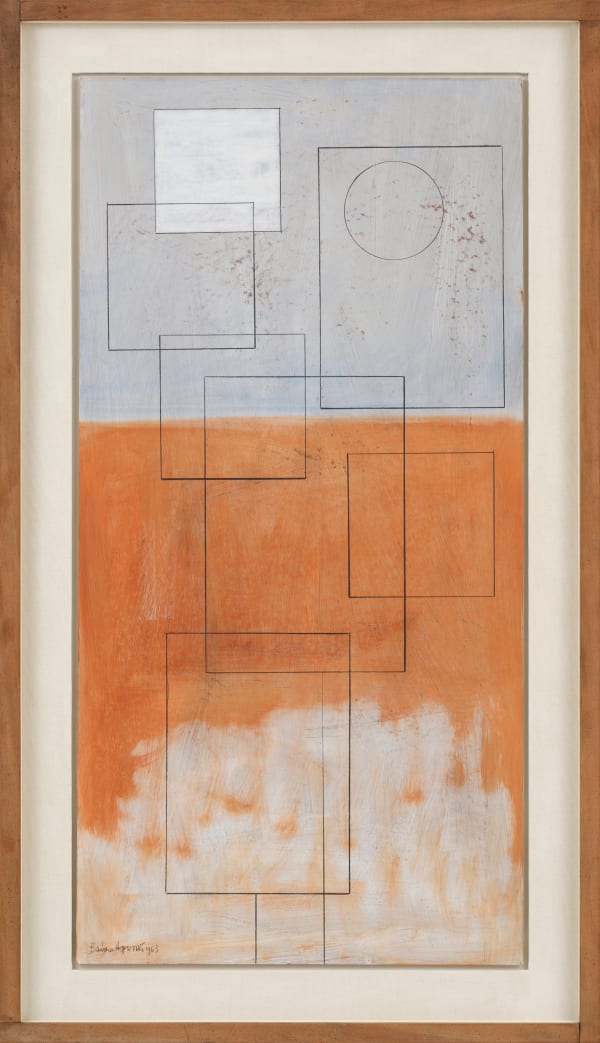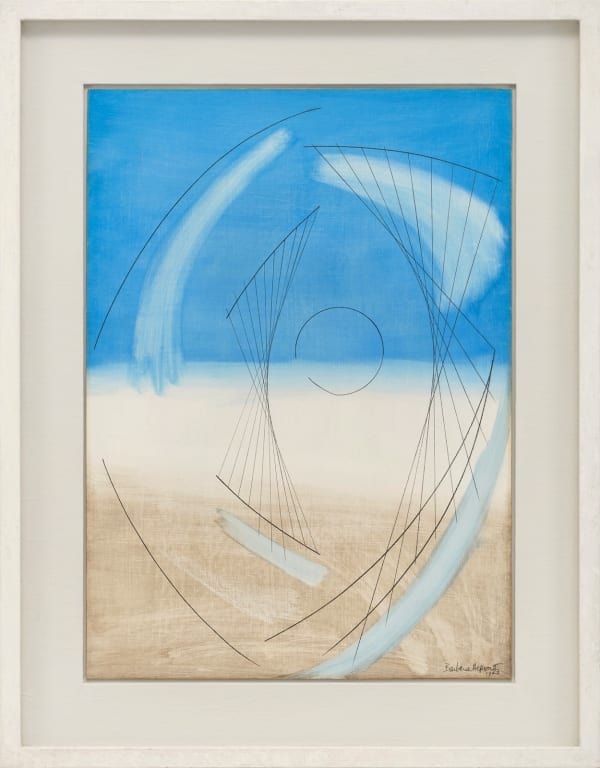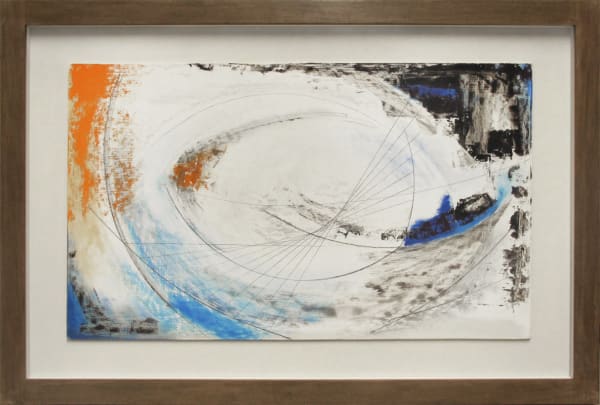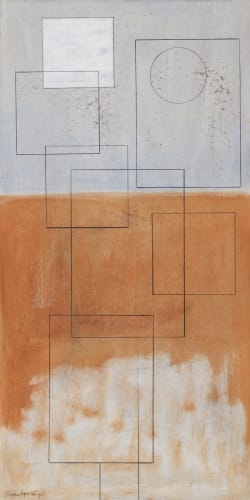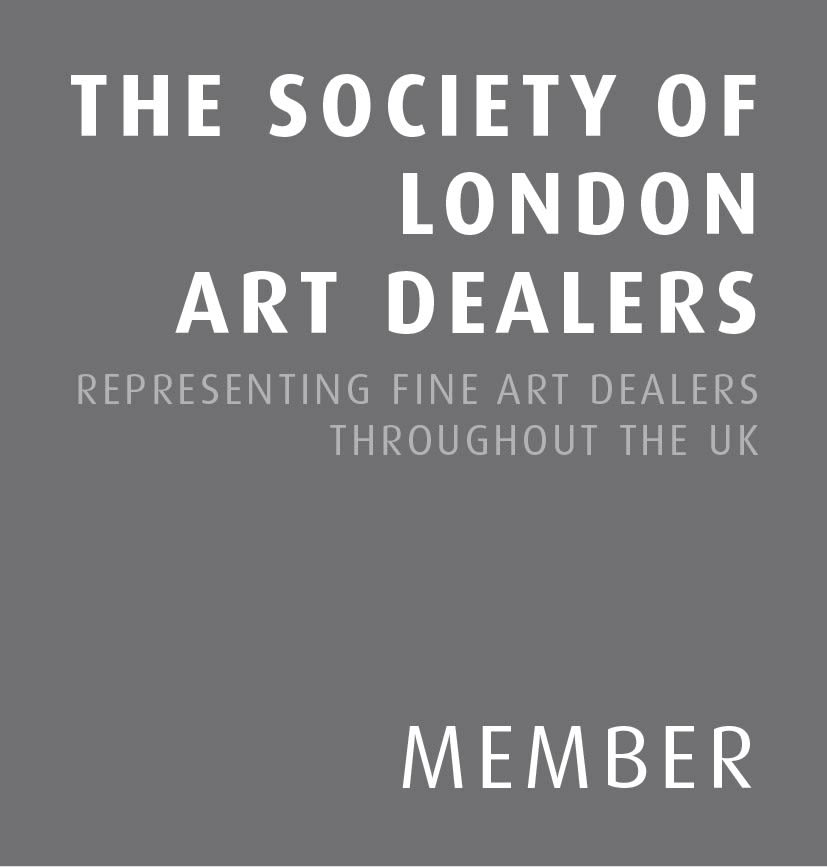-
 Barbara HepworthSquare & Circlesigned and dated 1963
Barbara HepworthSquare & Circlesigned and dated 1963
titled versooil and pencil on gesso prepared board92 x 46 cms (36 x 18 ins)Enquire
framed: 107 x 61 cms (42 x 24 ins) -
 Barbara HepworthAtlantic Form (Blue)signed and dated 1963
Barbara HepworthAtlantic Form (Blue)signed and dated 1963
also signed, dated and titled versooil & pencil on gesso prepared board63.5 x 46 cms (25 x 18 ins)
framed: 82 x 64 cms (32½ x 25 ins)Sold -
 Barbara HepworthStone Form (Tresco)signed and dated 1961
Barbara HepworthStone Form (Tresco)signed and dated 1961
also signed, titled and dated versooil & pencil on gesso prepared board33 x 56 cms (13 x 22 ins)
framed: 47.5 x 70.5 cms (19 x 28 ins)Sold
Widely recognised as one of Britain’s greatest sculptors of the 20th century, Barbara Hepworth was born in Wakefield in 1903. She began her training in 1920 at the Leeds School of Art followed by the Royal College of Art where she met Henry Moore.
Hepworth’s marriage to the sculptor John Skeaping in 1925 led to an exploration of Florence and Rome. Upon their return to London they joined the London Group and Seven and Five Society, placing them at the forefront of new movements in sculpture.
In 1931 Hepworth met Ben Nicholson and soon after, Hepworth amicably divorced Skeaping. Nicholson and Hepworth held a joint exhibition at Arthur Tooth’s gallery in 1932 exhibiting their avant-garde abstracted works. In 1935, both Hepworth and Nicholson changed the Seven and Five Society prerequisites to pure abstracted work, reinforcing growth in innovative art. However, the outbreak of war led Hepworth and Nicholson to evacuate London and move to St Ives where they lived with Adrian Stokes and Margaret Mellis.
Drawing remained a key aspect of her creative outlet, allowing her to explore form which would later influence her sculptures. By the 1960’s many of these were produced in oil and pencil, sometimes as working studies but frequently as paintings in their own right.
Public commissions were abundant. In 1963 Winged Figure was unveiled on the John Lewis building in Oxford Street and the following year Single Form situated at the United Nations Secretariat was completed in memory of Dag Hammarskjold, the Secretary General of the United Nations. In 1968 Tate Gallery held a major retrospective of her work. Marlborough Galleries held one of her last exhibitions in 1974, before her death in 1975.
